Pyramid of Caius Cestius
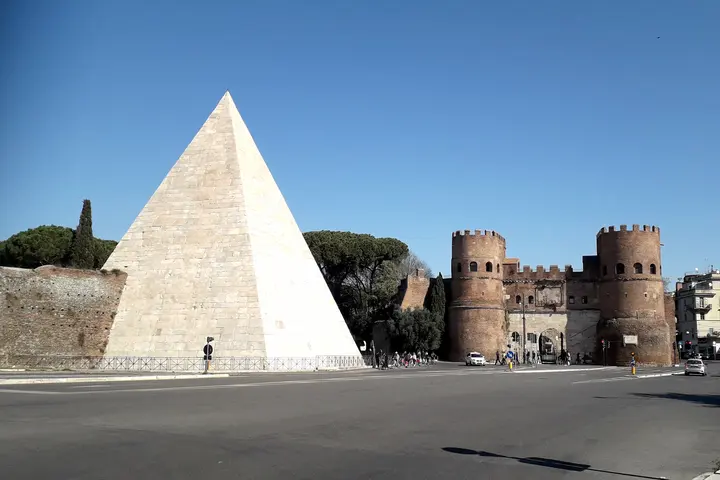
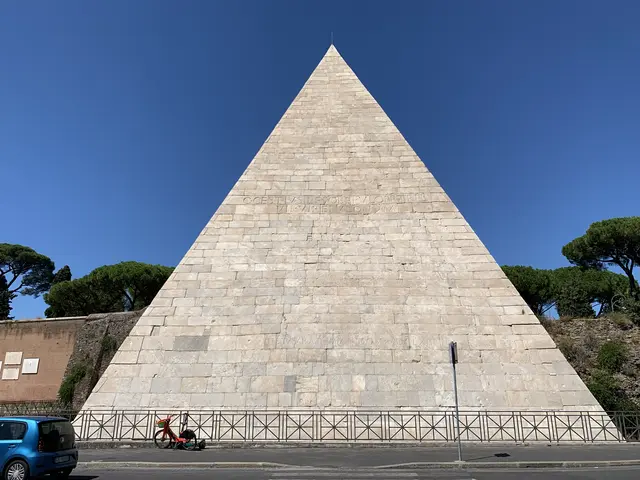
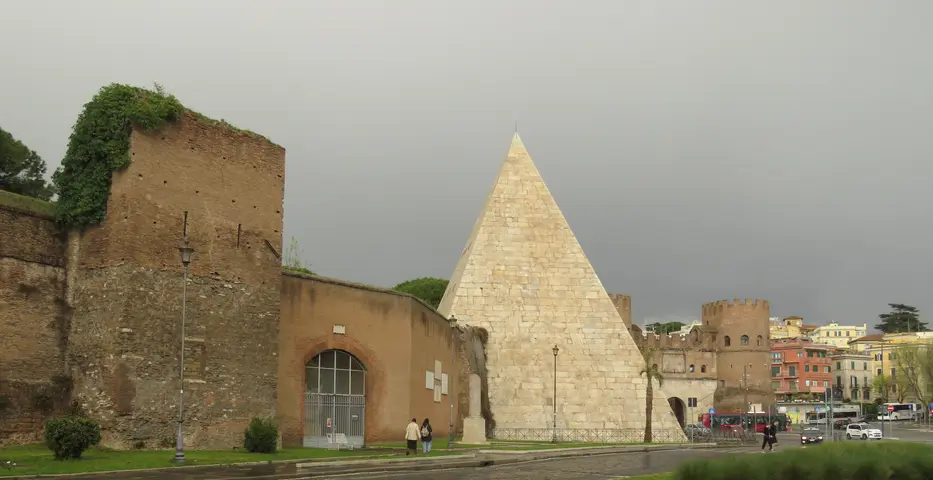
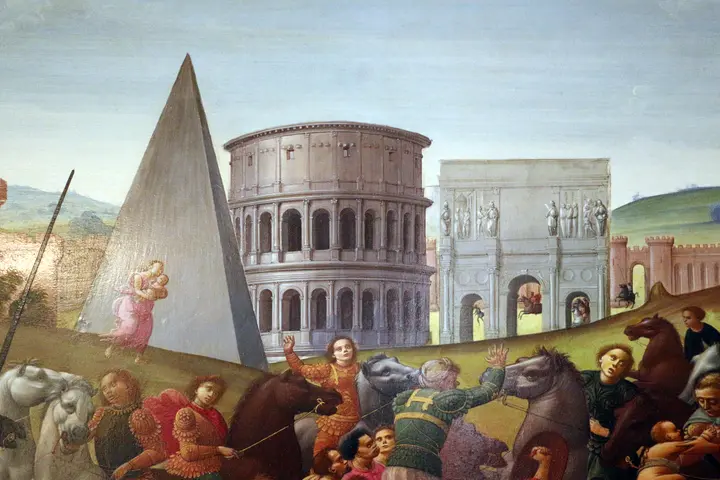
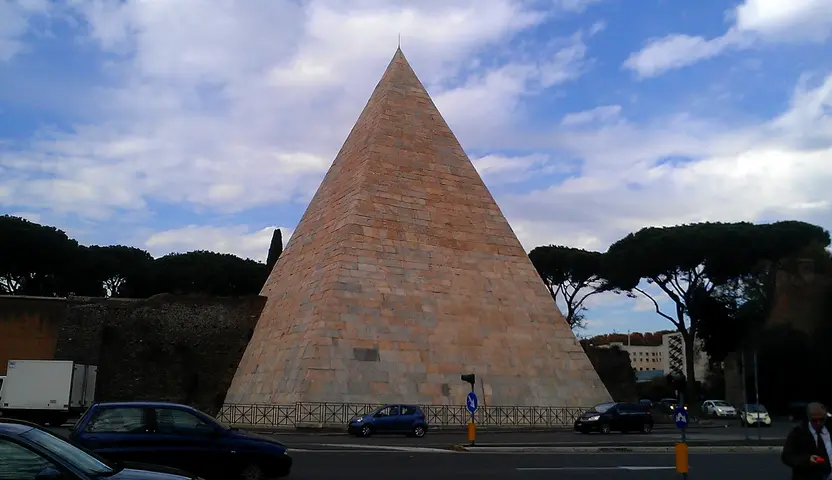
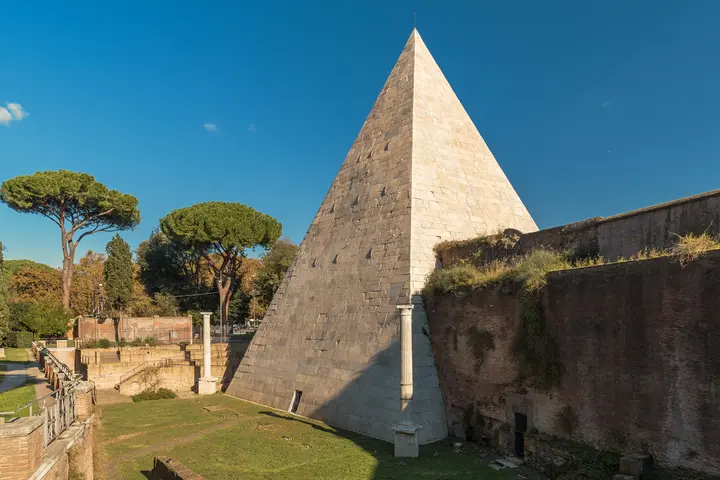

Introduction
The Pyramid of Cestius in Rome greets us with its striking white marble and sharp silhouette, an unexpected echo of Egypt in the heart of Italy. Built over 2,000 years ago, this Roman monument has inspired poets, puzzled locals, and sheltered the city through wars and centuries of change. Today, we discover how the Pyramid of Cestius still shapes our encounters with history, memory, and community.
Historic Highlights
🏛️ Egyptian Inspiration in Augustan Rome
The Pyramid of Cestius stands as Rome’s only surviving ancient pyramid tomb, its marble-clad sides rising steeply above the Porta San Paolo. Built between 18 and 12 BC for magistrate Gaius Cestius, the pyramid was part of a short-lived Roman vogue for Egyptian motifs after Rome’s conquest of Egypt. Standing over 36 meters tall, it was constructed in just 330 days—thanks to a clause in Cestius’s will threatening his heirs’ inheritance if they failed to finish on time!
“...the project was completed in 330 days.”
— Latin inscription on the Pyramid
🗿 From Tomb to Fortress
Roman tomb or triumphal arch? While most Roman monuments followed traditional styles, Cestius’s pyramid fused Roman concrete techniques with a distinctive, sharp Nubian-inspired shape. In the 3rd century AD, Emperor Aurelian’s new city walls swallowed up the pyramid, transforming it into a buttress for Rome’s defenses. This twist of fate protected the monument—while countless others vanished, the pyramid was literally built into Rome’s fabric.
📜 Legends, Poets, and Rediscovery
Through the Middle Ages, the pyramid’s true identity faded and it became known as the “Meta Remi,” the supposed tomb of Remus, Romulus’s twin. In the seventeenth century, Pope Alexander VII’s team dug through centuries of dirt, revealing Cestius’s inscriptions and dazzling frescoes inside the burial chamber. Suddenly, myth gave way to fact, and the pyramid’s story came to light once more.
“Who, then, was Cestius, and what is he to me?”
— Thomas Hardy, 1887
✒️ A Poetic Landmark
The Pyramid of Cestius found new fame in the 1800s as the backdrop for the graves of English poets Keats and Shelley in the nearby Protestant Cemetery. A visitor in the 1820s might spot mourners reciting lines amid tall cypresses, the pyramid glimmering above. Today, this Roman monument draws both literary pilgrims and lovers of lost legends.
💡 Visitor Tip
Reserve a guided tour inside the pyramid, offered just twice a month, to see its rare ancient frescoes. Pair your visit with a quiet walk through the Protestant Cemetery for a truly evocative outing.
Timeline & Context
Historical Timeline
- 23 BC – Probable Roman encounter with Nubian pyramids during military campaigns.
- 18–12 BC – Gaius Cestius commissions and pyramid is built in 330 days.
- ~18 BC – Sumptuary laws affect funeral arrangements; embroidered cloths sold for funding.
- 271–275 AD – Aurelian Walls built, incorporating pyramid as a bastion.
- Middle Ages – Pyramid known as "Meta Remi," linked to Remus legend.
- 1660–1663 – Pope Alexander VII oversees excavation; original inscriptions revealed.
- 1821–1822 – Keats and Shelley's burials bring literary fame.
- 1943 – Site involved in WWII Battle of Porta San Paolo; bomb damage repaired.
- 2012–2015 – Major restoration funded by Yuzo Yagi.
- 2015–present – Pyramid maintained and monitored as UNESCO World Heritage.
Architectural Synthesis in the Age of Augustus
The Pyramid of Cestius is a vivid case of cross-cultural exchange in early Imperial Rome. Its stark, pointed form diverged from Roman norms, channeling both Egyptian “Egyptomania” and the inspiration of Nubian (Meroitic) pyramids encountered during southern campaigns. Unlike the sprawling, gently angled pyramids at Giza, Cestius’s memorial is tall and steep, echoing the sharp geometry of those at Meroë—yet constructed with brick-faced Roman concrete and Carrara marble, showcasing the imperial ambition to recast Rome as a new world capital clad in shining stone.
Funerary Law and Construction Realities
Cestius’s mausoleum tells us about legal and social changes of the Augustan era. His will mandated swift completion under threat of inheritance loss, and a sumptuary edict forced his heirs to sell luxury cloth intended for burial, funding instead the bronze statues and marble adornments. The tomb’s Third Style Roman frescoes, now nearly lost, are still traceable in Bartoli’s 17th-century drawings, offering a glimpse into what was once an elegant, if sober, burial space. Despite its Egyptian exterior, inside followed contemporary Roman fashion: minimal yet refined wall painting.
Late Antique Transformation and Medieval Mythmaking
The pyramid’s survival is largely due to its forced enlistment as a city tower within the Aurelian Walls in the 3rd century. Unlike many marble monuments plundered over ensuing centuries, the pyramid’s strategic location ensured it remained off-limits to stone thieves. Ironically, its true origins faded, replaced by medieval folklore associating the site with Rome’s founders, further enhanced by the supposed existence of a twin pyramid (Meta Romuli) on the Vatican side. These persistent legends endured until the papal excavations of Alexander VII shattered the myth and reestablished historical fact.
Renaissance Rediscovery and Artistic Influence
Recovery of the original Latin inscription in the 1660s changed the pyramid’s status, as academics and artists began studying and depicting it. Grand Tour prints by Piranesi, Hardy’s poetry, and Shelley’s evocative lines—each transformed the tomb into a romanticized icon, influencing how Europeans imagined both Rome and distant Egypt. The pyramid’s pointed profile even inspired the way artists rendered pyramids in biblical scenes, often exaggerating real Egyptian shapes.
Modern Conservation and Cultural Legacy
Recent decades have recast the Pyramid of Cestius as both heritage site and community symbol. Restoration efforts between 2012 and 2015, made possible by private Japanese sponsorship, drew international praise and showcase global collaboration in heritage conservation. Modern urban threats—air pollution, biological growth, water infiltration—are mitigated by climate control for its precious frescoes, periodic marble cleaning, and careful visitor management. Today, the pyramid serves as a focus for local pride, a poetic backdrop for the adjacent Protestant Cemetery, and a poignant reminder of Rome’s centuries-long dialogue between East and West. Its legacy outlasts imperial vanity, becoming a shared site of reflection, remembrance, and resilience.